Protecting Your Home Against Natural Disasters
In today's unpredictable world, protecting your home against natural disasters is not just a luxury—it's a necessity. Every year, millions of homeowners face the devastating effects of events like floods, hurricanes, earthquakes, and wildfires. The impacts can be catastrophic, affecting not only the physical structure of your home but also your emotional well-being and financial stability. So, how can you ensure your home stands strong against these unpredictable foes? This article delves into various strategies and measures you can take to safeguard your property, ensuring safety and resilience when the unexpected strikes.
Natural disasters can take many forms, and understanding them is crucial for effective preparation and response. Each type of disaster presents unique challenges and risks, which vary based on geographical location. For instance, while some regions are more prone to hurricanes, others may face the threat of wildfires or earthquakes. Recognizing these risks is the first step in preparing your home and family for potential hazards.
Every home has its unique vulnerabilities based on its design, location, and materials used in construction. Conducting a thorough assessment can help homeowners identify and address weaknesses that may be exposed during a natural disaster. For example, if your home is built in an area prone to flooding, it’s essential to evaluate your drainage systems and consider elevating your property. On the other hand, homes in earthquake-prone regions may need to focus on securing heavy furniture and retrofitting structures to withstand seismic activity.
Understanding the specific risks associated with your area can significantly inform your protective measures and emergency plans. Here are some common location-specific risks you might encounter:
- Flood Zones: Homes located in flood-prone areas require special considerations, such as elevation and improved drainage systems.
- Earthquake-Prone Areas: In these regions, securing heavy furniture and retrofitting structures can greatly reduce the risk of injury and damage.
- Hurricane Zones: Installing storm shutters and reinforcing roofs can help protect your home from high winds and flying debris.
- Wildfire Regions: Creating defensible space around your home can significantly reduce the risk of fire damage.
Investing in home improvements can greatly enhance your property's ability to withstand natural disasters. Simple upgrades can make a significant difference in protecting your home. For example, reinforcing roofs, installing storm shutters, and using fire-resistant materials can all contribute to a more resilient home. Additionally, landscaping plays a crucial role in disaster preparedness. Planting native, drought-resistant plants can help reduce wildfire risk, while proper grading can aid in flood prevention.
An effective emergency plan is essential for ensuring the safety of all household members during a natural disaster. This plan should include evacuation routes, communication strategies, and emergency contact information. It’s not enough to just have a plan; you need to practice it regularly. Conducting drills can help everyone in your household feel more confident and prepared when disaster strikes.
Establishing a communication plan ensures that all family members know how to reach each other during a crisis. This strategy can reduce panic and improve coordination during emergencies. Consider designating a family member as the primary point of contact and ensure everyone has their contact information. It’s also wise to have a backup communication method, such as a group chat or a designated meeting place, in case phone lines are down.
Knowing when and how to evacuate is critical for safety. Homeowners should familiarize themselves with local evacuation routes and procedures. Create a checklist of essential items to take with you, such as medications, important documents, and personal belongings. Practicing your evacuation plan can help ensure a swift and safe departure when necessary.
Having adequate insurance coverage is vital for protecting your home against natural disasters. Homeowners should review their policies to ensure they have sufficient protection for potential damages caused by various disasters. It’s essential to understand that standard homeowner’s insurance may not cover specific disasters, such as floods or earthquakes, which often require separate policies.
Understanding the different types of insurance coverage available can help homeowners make informed decisions about their policies. Here are some common types:
- Flood Insurance: Essential for homes in flood-prone areas, this coverage helps with repairs and replacements.
- Earthquake Insurance: This policy can cover structural damage and personal property loss due to seismic activity.
- Windstorm Insurance: Often necessary in hurricane-prone areas, this can cover damage from high winds and debris.
Regularly reviewing policy limits is essential to ensure coverage aligns with current home values and potential risks. Homeowners should adjust their policies as needed to maintain adequate protection against disasters. It’s a good idea to consult with an insurance agent to ensure you’re fully covered.
1. What should I do first when preparing for a natural disaster?
Start by assessing your home’s vulnerabilities and understanding the specific risks associated with your area. Create an emergency plan and ensure all family members are familiar with it.
2. How often should I review my insurance policy?
It's advisable to review your insurance policy annually or whenever there are significant changes to your home or its value.
3. What are the most common natural disasters I should prepare for?
The most common natural disasters vary by region but typically include floods, hurricanes, earthquakes, and wildfires. Knowing what’s most likely in your area helps you prepare effectively.
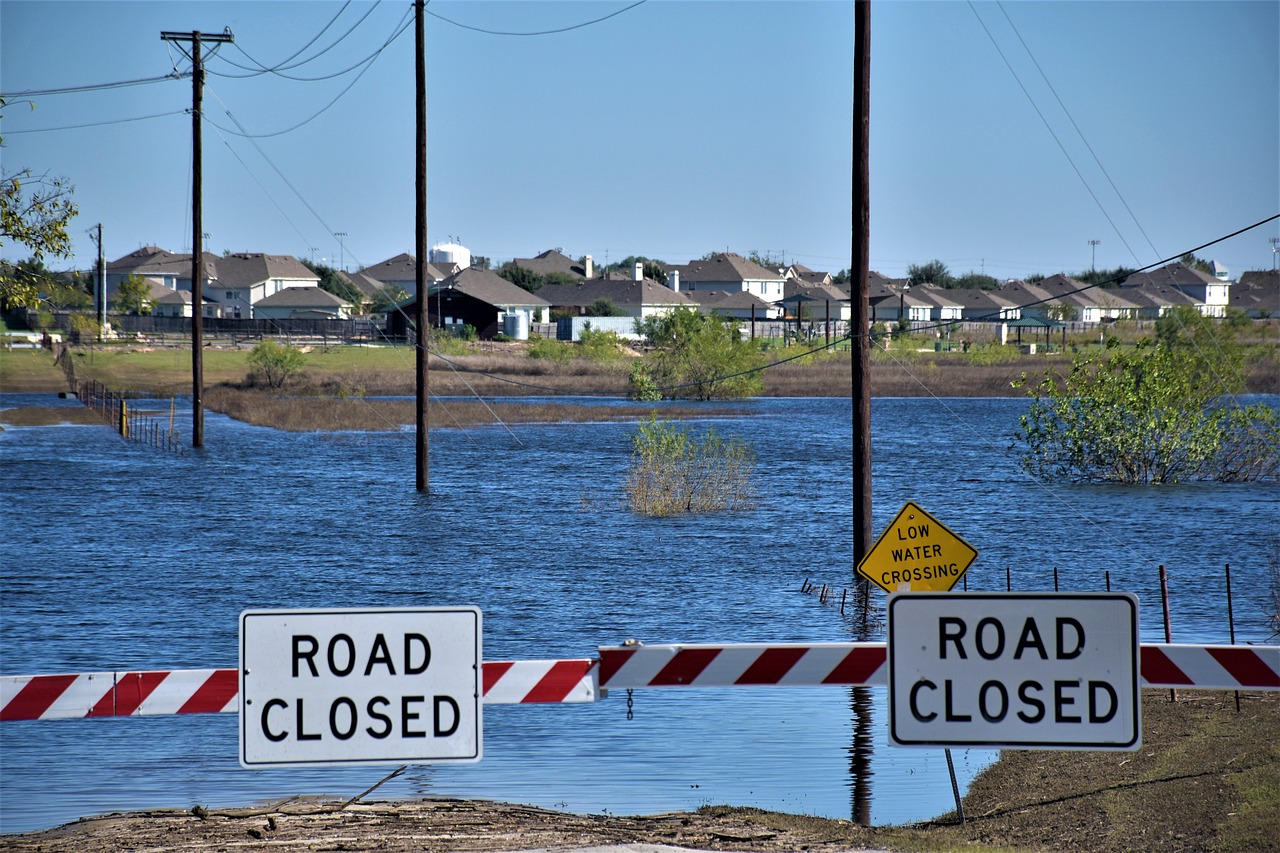
Understanding Natural Disasters
Natural disasters are unpredictable events that can wreak havoc on our lives and properties. They come in various forms, each with its own set of characteristics and risks. Understanding these disasters is crucial for effective preparation and response. Imagine living in a beautiful home, only to have it swept away by a flood or damaged by an earthquake. By recognizing the types of natural disasters that can occur in your area, you can take proactive steps to safeguard your home and loved ones.
Natural disasters include:
- Floods: Often caused by heavy rainfall, storm surges, or melting snow, floods can inundate homes and lead to significant property damage.
- Hurricanes: These powerful storms bring strong winds and heavy rainfall, often resulting in severe flooding and structural damage.
- Earthquakes: Sudden movements of the earth can cause buildings to collapse and lead to widespread devastation.
- Wildfires: These can spread rapidly in dry conditions, threatening homes and ecosystems alike.
Each type of disaster has its own unique risks, and understanding these can help homeowners recognize the vulnerabilities of their properties. For instance, if you live in a flood-prone area, knowing the flood zone maps can help you determine how high you should elevate your home or whether you need specialized flood insurance. Similarly, if you’re in an earthquake-prone region, securing heavy furniture and retrofitting your home can make a world of difference in minimizing damage and ensuring safety.
Moreover, it’s essential to stay informed about local weather patterns and geological risks. Many communities provide resources and information about potential threats, helping residents prepare better. By being proactive and knowledgeable, you can turn your home into a fortress against the unpredictable forces of nature.
In summary, understanding natural disasters is not just about knowing what could happen; it’s about being prepared. It’s about taking the necessary steps to protect your home and family from the unforeseen. The more you know, the better equipped you will be to face whatever challenges may come your way.
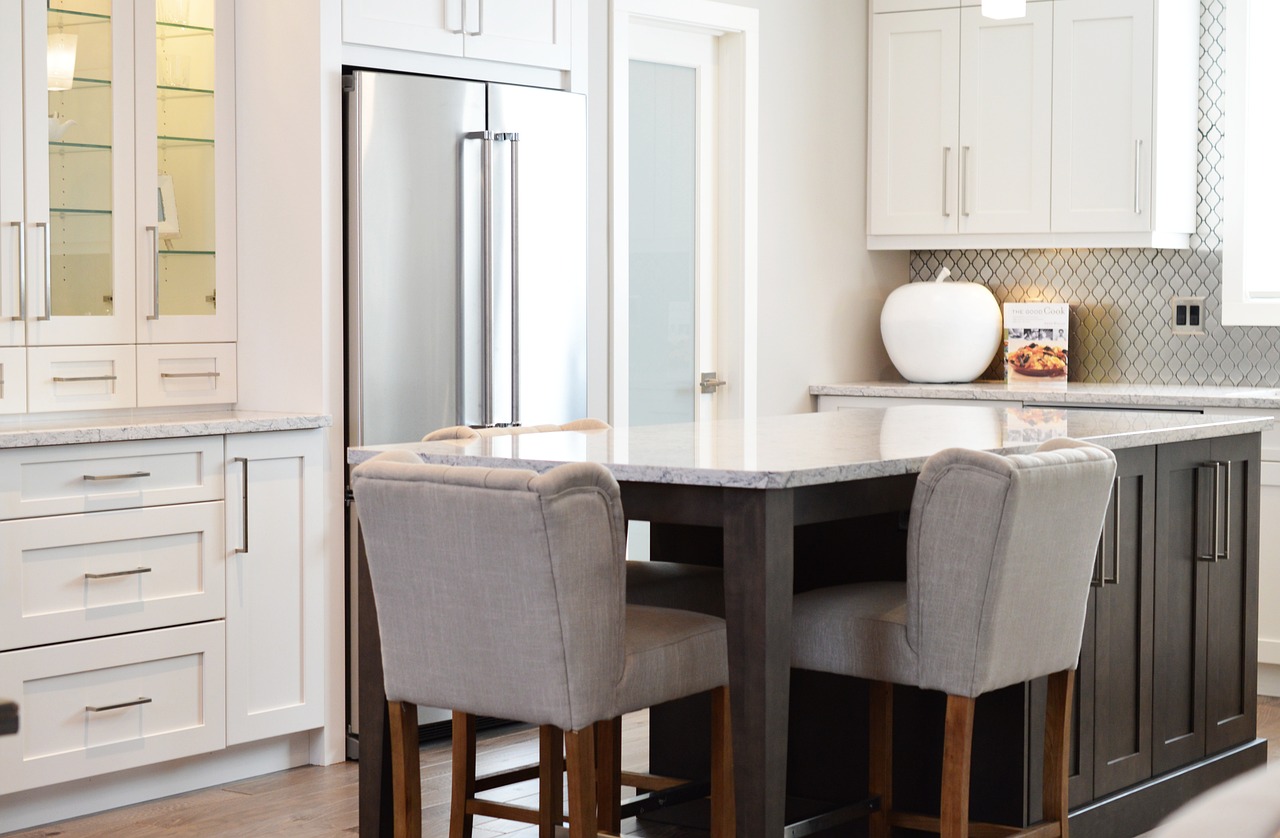
Assessing Your Home's Vulnerabilities
Every home is unique, and with that uniqueness comes a distinct set of vulnerabilities, especially when it comes to facing the wrath of natural disasters. It’s like knowing your own strengths and weaknesses in a game; understanding your home’s vulnerabilities is the first step in fortifying it against potential threats. By conducting a thorough assessment, homeowners can identify the weaknesses that could be exposed during a disaster, allowing them to take proactive measures to protect their property and loved ones.
To kick things off, it’s essential to consider the various factors that contribute to a home's vulnerability. These include the design of the home, the materials used in construction, and, perhaps most importantly, its geographical location. For instance, a charming wooden house perched on a hillside might look picturesque, but if it’s in an area prone to wildfires, that beauty could quickly turn into a nightmare. Similarly, a cozy bungalow located in a flood zone may be at risk, regardless of how well it’s built. Therefore, understanding these aspects is crucial for effective preparation.
Let’s delve deeper into location-specific risks because they play a significant role in determining how susceptible your home is to natural disasters. Here are some common vulnerabilities based on geographical areas:
- Flood Zones: If your home is situated in a flood-prone area, it’s vital to assess the elevation of your property. Homes in flood zones often require specific considerations, such as installing sump pumps or creating drainage systems to manage excess water. The Federal Emergency Management Agency (FEMA) provides flood maps that can help you understand your risk level.
- Earthquake-Prone Areas: For those living in regions where earthquakes are a common occurrence, securing heavy furniture and retrofitting your home’s structure can significantly reduce the risk of injury and damage. Simple actions, like strapping bookcases to the wall or ensuring that your gas lines are secure, can make a world of difference.
- Hurricane Zones: Homes in hurricane-prone areas should focus on reinforcing roofs and installing storm shutters. The wind can be incredibly destructive, and ensuring that your windows and doors are secure can help mitigate damage.
- Wildfire Areas: If you’re in a region at risk for wildfires, consider creating defensible space around your home by clearing away flammable vegetation and using fire-resistant building materials.
Conducting a vulnerability assessment involves not just identifying these risks, but also taking actionable steps to address them. This could mean hiring a professional to evaluate your home’s structural integrity or simply walking around your property and noting areas that could use some reinforcement. It’s all about being proactive rather than reactive. After all, when disaster strikes, it’s too late to wish you’d taken those precautions!
In conclusion, assessing your home’s vulnerabilities is a crucial step in disaster preparedness. By understanding the specific risks associated with your location and taking the necessary steps to fortify your home, you can significantly enhance your resilience against the unpredictable forces of nature. Remember, it’s not just about protecting your property; it’s about ensuring the safety and well-being of your family. So, roll up your sleeves, take a good look around, and start making those improvements today!
Q1: How often should I assess my home for vulnerabilities?
A1: It’s a good idea to conduct a vulnerability assessment at least once a year and after any significant weather events or changes to your home or property.
Q2: Should I hire a professional for the assessment?
A2: While you can do a preliminary assessment yourself, hiring a professional can provide a more thorough evaluation and expert recommendations for improvements.
Q3: What are some low-cost improvements I can make to enhance my home’s resilience?
A3: Simple improvements such as securing heavy furniture, installing weather stripping, and keeping gutters clean can go a long way in protecting your home without breaking the bank.

Location-Specific Risks
When it comes to safeguarding your home against natural disasters, understanding is key. Each region has its unique set of challenges, influenced by geographical features, climate, and even local infrastructure. For instance, coastal areas are often at a higher risk of hurricanes and flooding, while mountainous regions may face threats from landslides and wildfires. Recognizing these risks allows homeowners to tailor their preparations and protective measures effectively.
Take a moment to consider your own surroundings. Are you living in a flood zone? If so, you might need to invest in elevated foundations and robust drainage systems. Or perhaps you reside in an area prone to earthquakes? In that case, securing heavy furniture and retrofitting your home can make a world of difference in minimizing damage and ensuring safety. Understanding your specific risks is like having a map that guides you through the unknown terrain of natural disasters.
Here are some common location-specific risks that homeowners should be aware of:
- Flooding: Areas near rivers, lakes, or in low-lying regions are particularly vulnerable.
- Wildfires: Homes situated near forests or grasslands face the threat of wildfires, especially during dry seasons.
- Earthquakes: Regions along tectonic plate boundaries are at risk of seismic activity.
- Hurricanes: Coastal regions are often in the direct path of hurricanes, requiring additional protective measures.
By understanding these risks, you can develop a comprehensive plan that includes both preventive measures and emergency responses. For instance, if you're in a wildfire-prone area, creating a defensible space around your home by clearing flammable vegetation can significantly reduce the risk of fire damage. Similarly, if you live in a flood zone, installing sump pumps and flood barriers can help mitigate potential water damage.
In conclusion, being aware of the specific risks associated with your location is not just about knowledge—it's about empowerment. It allows you to take proactive steps that can safeguard your home and loved ones during unpredictable natural disasters. After all, when it comes to protecting your home, the best offense is a good defense!
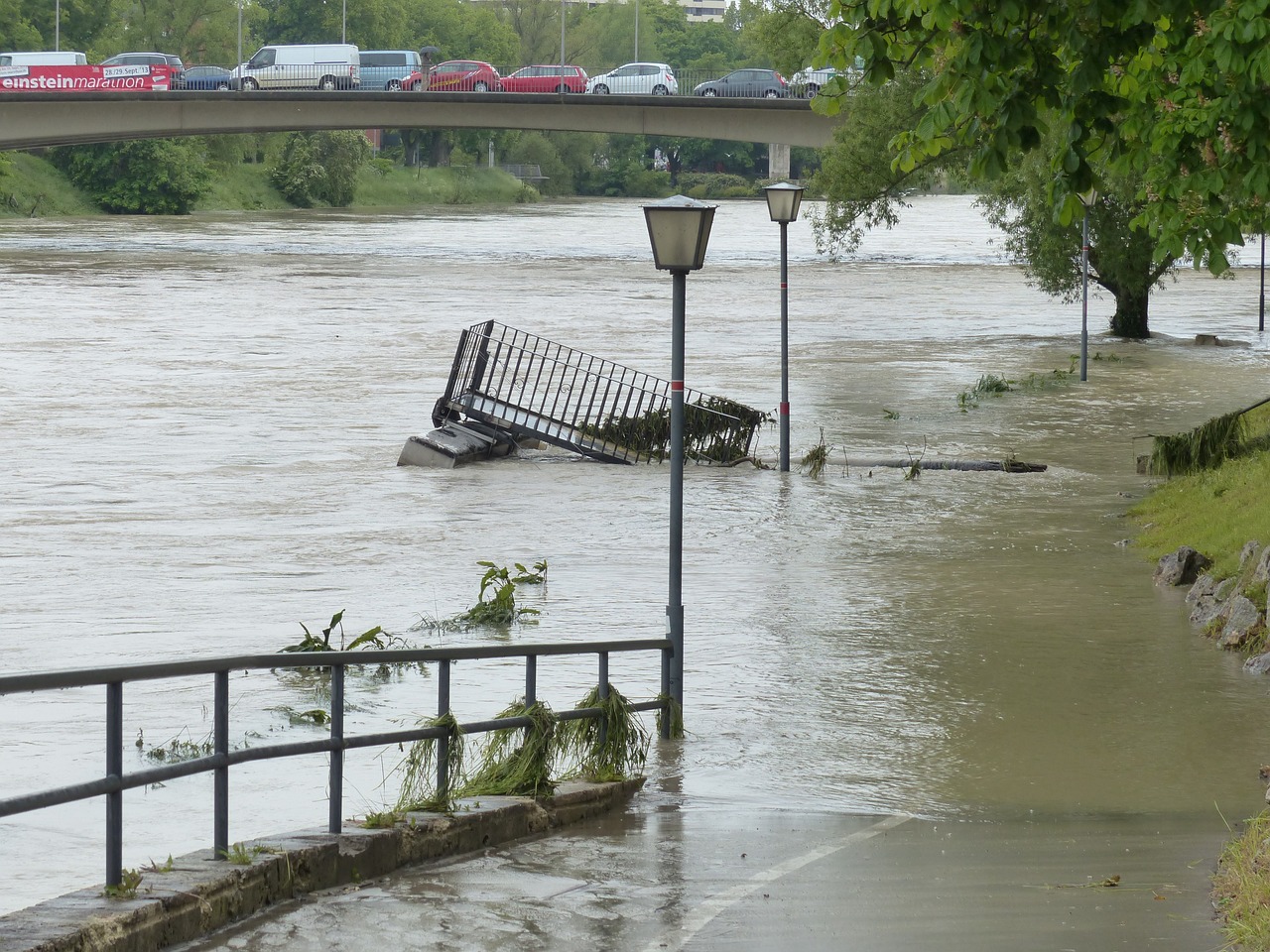
Flood Zones
Living in a flood zone can feel like dancing on a tightrope; one moment everything seems fine, and the next, you’re knee-deep in water. Flood zones are designated areas that are prone to flooding, and understanding their implications is crucial for homeowners. The Federal Emergency Management Agency (FEMA) classifies flood zones based on the likelihood of flooding, which can vary significantly from one location to another. Knowing your home’s flood zone classification can help you implement the right protective measures to minimize damage and ensure safety.
For instance, homes in high-risk flood zones (often labeled as Zones A and V) have a greater chance of experiencing severe flooding. These areas typically require homeowners to carry flood insurance, which can be a lifesaver in the event of a disaster. It’s not just about protecting your property; it’s about safeguarding your peace of mind. On the other hand, moderate to low-risk flood zones (Zones B, C, and X) may not require mandatory flood insurance, but this doesn’t mean you should ignore the potential for flooding altogether. Many homeowners in these areas have found themselves surprised by unexpected water damage, leading to costly repairs.
To illustrate the differences in flood zones, consider the following table:
| Flood Zone | Description | Insurance Requirement |
|---|---|---|
| Zone A | High-risk area subject to flooding. | Mandatory flood insurance. |
| Zone V | High-risk coastal area subject to wave action. | Mandatory flood insurance. |
| Zone B | Moderate-risk area; possible flooding. | Optional flood insurance. |
| Zone C | Low-risk area; minimal flooding potential. | Optional flood insurance. |
| Zone X | Low-risk area; unlikely to flood. | Optional flood insurance. |
When preparing your home for potential flooding, consider implementing some preventative measures. Elevate your home if you live in a high-risk area, and ensure that your drainage systems are functioning correctly. Landscaping can also play a significant role; using native plants can help absorb excess rainwater and reduce runoff. Additionally, installing flood vents can allow water to flow through your home rather than accumulating inside, minimizing damage.
In conclusion, understanding your home’s flood zone is not just a matter of compliance; it’s about taking proactive steps to protect your family and property. By assessing your risks and implementing effective flood-proofing strategies, you can transform your home from a potential disaster zone into a resilient fortress against nature's unpredictability.
- What should I do if my home is in a high-risk flood zone? - Consider elevating your home and purchasing flood insurance to protect your investment.
- How can I find out my home's flood zone? - You can check FEMA's Flood Map Service Center or contact your local planning department.
- Is flood insurance expensive? - The cost can vary based on your flood zone, home elevation, and coverage amount, but it's often a small price compared to potential damages.
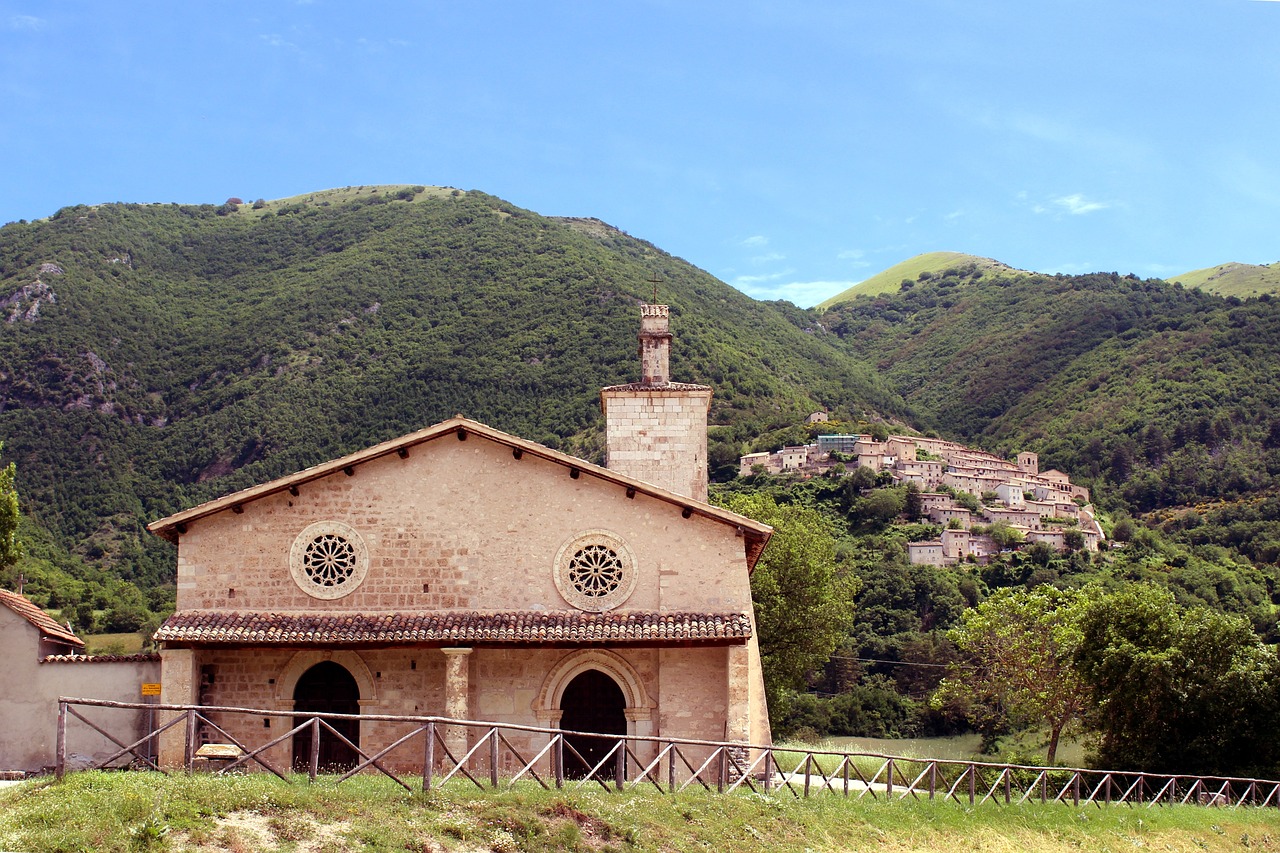
Earthquake-Prone Areas
Living in an earthquake-prone area can feel like dancing on a tightrope—exciting yet precarious. Earthquakes are sudden and unpredictable, often striking without warning, which makes it crucial for homeowners in these regions to take proactive steps to protect their properties and loved ones. First and foremost, understanding the geological risks associated with your location is essential. This knowledge not only informs your preparedness but also helps you make informed decisions about home improvements and safety measures.
One of the most effective strategies for enhancing your home's resilience against earthquakes is retrofitting. This involves reinforcing your home’s structure to better withstand seismic forces. Key retrofitting measures include:
- Securing Heavy Furniture: Ensure that large items like bookshelves, cabinets, and appliances are anchored to the walls. This prevents them from toppling over during a quake, which can cause injuries.
- Foundation Bolting: This involves bolting your home’s foundation to its frame to prevent it from shifting during seismic activity.
- Bracing Walls: Adding plywood or steel bracing to exterior walls can help them resist the lateral forces of an earthquake.
Moreover, investing in flexible utility connections can significantly reduce the risk of gas leaks and water line breaks, which are common hazards during earthquakes. Flexible connections allow for movement without breaking, thereby minimizing potential damage. It's also wise to assess your home’s landscape; steep slopes or loose soil can increase the risk of landslides during seismic events. If your property is at risk, consider landscaping solutions that stabilize the soil, such as planting deep-rooted vegetation.
In addition to physical improvements, it's vital to develop an emergency plan tailored to your household. Make sure everyone knows how to respond during an earthquake. Establish safe spots in your home where family members can take cover, such as under sturdy furniture or against an interior wall away from windows. Regularly practicing earthquake drills can make a significant difference in how effectively your family reacts during an actual event.
Lastly, don’t forget about the importance of having an emergency kit ready. This kit should include essentials like water, non-perishable food, a flashlight, batteries, and first-aid supplies. By taking these steps, homeowners in earthquake-prone areas can significantly enhance their safety and resilience, transforming their homes into bastions of security amidst the unpredictable forces of nature.
Q: How can I tell if my home is in an earthquake-prone area?
A: You can check local geological surveys or resources from the United States Geological Survey (USGS) to find out if your area is at risk for earthquakes.
Q: What should I do during an earthquake?
A: Drop to the ground, take cover under a sturdy piece of furniture, and hold on until the shaking stops. Avoid doorways unless you are certain they are the safest place to be.
Q: Is earthquake insurance necessary?
A: While not mandatory, earthquake insurance can provide peace of mind and financial protection against the costly damages that can occur from seismic events.

Home Improvement Strategies
This article explores various strategies and measures homeowners can take to safeguard their properties from the devastating effects of natural disasters, ensuring safety and resilience in the face of unpredictable events.
Natural disasters can take many forms, including floods, hurricanes, earthquakes, and wildfires. Understanding these events is crucial for effective preparation and response, helping homeowners recognize the risks associated with their geographical locations.
Every home has unique vulnerabilities based on its design, location, and materials. Conducting a thorough assessment can help homeowners identify and address weaknesses that may be exposed during a natural disaster.
Different regions face different natural disaster threats. Knowing the specific risks associated with your area can inform your protective measures and emergency plans, ensuring you are well-prepared for potential hazards.
Homes located in flood-prone areas require specific considerations such as elevation and drainage systems. Understanding flood zones can help homeowners implement effective flood-proofing measures to minimize damage.
In earthquake-prone regions, securing heavy furniture and retrofitting structures can significantly reduce the risk of injury and damage. Homeowners should prioritize these safety measures to enhance their home’s resilience.
Investing in home improvements can greatly enhance a property's ability to withstand natural disasters. Think of your home as a fortress; the stronger the walls, the better you'll be able to fend off the unexpected. From reinforcing roofs to installing storm shutters, various strategies can protect homes from severe weather events. For instance, storm-resistant windows can be a game changer. These windows are designed to withstand high winds and flying debris, which are common during hurricanes. Additionally, consider adding reinforced roofs that can handle heavy snow loads or strong winds, depending on your region.
Moreover, it's essential to upgrade your drainage systems. Proper drainage can prevent water from pooling around your foundation, which is particularly important in flood-prone areas. Installing a sump pump can also be beneficial, as it helps to remove water that accumulates in your basement during heavy rains.
Another critical area to focus on is your landscaping. Strategically placed trees and shrubs can act as windbreaks, reducing wind speed and protecting your home from damage. However, it's vital to choose the right plants; avoid those with shallow root systems that could easily be uprooted during a storm. Instead, opt for deep-rooted varieties that can provide stability.
Lastly, don’t overlook the importance of fire-resistant materials if you live in wildfire-prone areas. Using non-combustible siding and roofing materials can significantly reduce the risk of your home catching fire. In addition, maintaining a defensible space around your property by clearing away dead vegetation and keeping gutters clean can further enhance your home’s fire resilience.
An effective emergency plan is essential for ensuring the safety of all household members during a natural disaster. This plan should include evacuation routes, communication strategies, and emergency contact information.
Establishing a communication plan ensures that all family members know how to reach each other during a crisis. This strategy can reduce panic and improve coordination during emergencies.
Knowing when and how to evacuate is critical for safety. Homeowners should familiarize themselves with local evacuation routes and procedures to ensure a swift and safe departure when necessary.
Adequate insurance coverage is vital for protecting your home against natural disasters. Homeowners should review their policies to ensure they have sufficient protection for potential damages caused by various disasters.
Understanding the different types of insurance coverage available, such as flood or earthquake insurance, can help homeowners make informed decisions about their policies and ensure comprehensive protection.
Regularly reviewing policy limits is essential to ensure coverage aligns with current home values and potential risks. Homeowners should adjust their policies as needed to maintain adequate protection against disasters.
- What is the best way to prepare my home for a hurricane? Reinforce windows, secure outdoor items, and ensure your roof is in good condition.
- How can I assess my home's vulnerability to earthquakes? Check if your home is bolted to its foundation and secure heavy furniture.
- What type of insurance do I need for flood protection? You should consider a separate flood insurance policy, as standard homeowners' insurance typically does not cover flood damage.

Creating an Emergency Plan
When it comes to safeguarding your home and loved ones from the unpredictable nature of natural disasters, having a well-thought-out emergency plan is not just a good idea; it's essential. Think of it as your family's roadmap to safety. Without it, you might find yourselves lost in the chaos of a disaster, unsure of what to do next. The first step is to gather your family and discuss the potential disasters that could impact your area. This conversation will help everyone understand the gravity of the situation and the importance of being prepared.
Once you’ve identified the risks, it’s time to put together a comprehensive plan that includes evacuation routes, communication strategies, and emergency contact information. Consider creating a family emergency kit that includes essentials like water, non-perishable food, first-aid supplies, flashlights, and batteries. Having these items readily available can make a world of difference in a crisis.
Moreover, it’s crucial to establish a clear communication plan. In the event of a disaster, chaos can reign supreme, and panic can set in. By having a designated meeting place where family members can regroup, you can alleviate some of that stress. This location should be easily accessible and familiar to everyone. It's also wise to have a list of emergency contacts, including local authorities, friends, and family members who live outside the immediate area. This way, if you get separated, you can still reach out for help.
To ensure that everyone is on the same page, consider conducting regular drills. Just like fire drills at school, practicing your emergency plan can help reinforce its importance and familiarize everyone with the steps they need to take. These drills can be a fun family activity, turning a serious topic into a bonding experience. After all, when the time comes, you want your family to react swiftly and confidently.
In addition to your home-based plan, it’s wise to stay informed about local emergency services and resources. Many communities offer alerts and notifications for impending disasters. Signing up for these services can keep you in the loop and provide critical information when you need it most. Remember, preparation is your best defense against chaos!
To summarize, creating an effective emergency plan involves:
- Identifying potential disasters in your area.
- Establishing evacuation routes and communication strategies.
- Preparing a family emergency kit.
- Conducting regular drills to practice your plan.
- Staying informed about local emergency resources.
By taking these steps, you’re not just protecting your home; you’re also ensuring the safety and well-being of your family during natural disasters. Remember, the time to prepare is now—don’t wait until the storm is upon you!
Q: What should I include in my emergency kit?
A: Your emergency kit should contain essentials such as water, non-perishable food, a first-aid kit, flashlights, batteries, personal hygiene items, and important documents.
Q: How often should I review my emergency plan?
A: It's a good idea to review your emergency plan at least once a year, or whenever there are significant changes in your household or local disaster risks.
Q: What if my family members are not together during a disaster?
A: Establish a meeting point and maintain a list of emergency contacts, including those who live outside your immediate area. This way, you can coordinate and ensure everyone's safety.

Family Communication
When disaster strikes, the last thing you want is chaos and confusion among your family members. Establishing a solid communication plan is essential for ensuring everyone knows what to do and where to go. Think of it like a well-rehearsed play; each family member has a role, and everyone knows their lines. This preparation can significantly reduce panic and improve coordination during emergencies.
Your communication plan should include several key elements. First, everyone in the family should have a list of important phone numbers, including emergency contacts, local authorities, and family members' numbers. Make sure this list is accessible—perhaps on the fridge, in a wallet, or saved in a shared digital note. In moments of crisis, having quick access to these numbers can be a lifesaver.
Next, consider designating a meeting point where your family can gather if you get separated during a disaster. This place should be easy to remember and accessible, like a neighbor's house or a local park. Communicating this location to all family members ensures that, even in the chaos of a natural disaster, there’s a safe haven to regroup.
It’s also crucial to have a backup communication method. In the event that cell networks go down, having a plan for how to communicate can be invaluable. For instance, you might agree to use social media or text messaging, as these platforms can sometimes work even when traditional calls cannot. You can also designate a family member who lives out of state as a central point of contact. This person can relay messages and updates between family members, which is especially useful if local communication lines are compromised.
To make sure everyone is on the same page, hold regular family meetings to review your communication plan. This is a great opportunity to practice what to do in case of an emergency, discuss any updates to the plan, and answer any questions family members might have. Just as you wouldn't wait for a fire to practice your escape routes, don’t wait for a disaster to discuss your communication strategy.
Finally, keep in mind that children may need extra guidance during emergencies. Consider creating a simple, child-friendly version of your communication plan that outlines what they should do and who they should contact. Use visuals or even role-playing to help them understand. This not only empowers them but also gives you peace of mind knowing they can act responsibly if you’re not around.
In conclusion, effective family communication during a natural disaster can make all the difference. By preparing in advance, you can transform a potentially chaotic situation into a coordinated response, ensuring safety and minimizing stress for everyone involved.
- What should I include in my family communication plan?
Your family communication plan should include important phone numbers, a designated meeting point, backup communication methods, and regular review sessions.
- How can I ensure my children understand the communication plan?
Use simple language, visuals, and role-playing to help them grasp the details. Regular practice can also reinforce their understanding.
- What if cell phones don't work during a disaster?
Have a backup communication method, such as social media or a designated out-of-state contact who can relay messages.

Evacuation Procedures
When it comes to ensuring the safety of your family during a natural disaster, having a well-thought-out evacuation plan is paramount. It’s not just about knowing when to leave, but also understanding how to leave efficiently. Imagine a chaotic scene where everyone is scrambling to find their loved ones and figure out the safest route out of town. This is why preparation is key!
First and foremost, familiarize yourself with the local evacuation routes. Many communities provide maps and guidelines, often available through local government websites or emergency management offices. Knowing these routes in advance can save precious time when every second counts. Additionally, consider the following:
- Designate a meeting point: Choose a safe location where your family can regroup if separated during an evacuation.
- Practice your plan: Conduct regular drills with your family, so everyone knows what to do and where to go. This practice can help alleviate panic during an actual emergency.
- Pack an emergency kit: Ensure you have a go-bag ready with essentials like water, non-perishable food, medications, and important documents. This kit should be easily accessible and portable.
Moreover, it’s crucial to stay informed about the situation through reliable sources. Keep a battery-operated radio handy, or download emergency apps on your phone that provide real-time updates about weather conditions and evacuation orders. In today’s fast-paced world, information is your best ally.
Another vital aspect of evacuation procedures is understanding the specific timing of your exit. Don’t wait until the last minute to leave, as this can lead to gridlock and confusion. If you hear warnings or alerts, take them seriously and act swiftly. Remember, it’s better to be safe than sorry!
Lastly, consider your pets in your evacuation plan. Many shelters do not allow animals, so it’s essential to identify pet-friendly accommodations in advance. Make sure they have proper identification and a safe carrier for transport. Your pets are part of your family, and their safety is just as important!
In summary, a solid evacuation plan is a blend of knowledge, preparation, and practice. By understanding your local routes, establishing communication and meeting points, and staying informed, you can significantly enhance your family’s safety during a natural disaster. Remember, the goal is to stay calm and act decisively when the time comes!
Q: What should I include in my emergency kit?
A: Your emergency kit should include water, non-perishable food, medications, a flashlight, batteries, a first-aid kit, important documents, and any personal items you may need.
Q: How can I stay informed during a disaster?
A: Keep a battery-operated radio, sign up for local alerts, and download emergency management apps to receive real-time updates.
Q: What if I have pets?
A: Make sure to include your pets in your evacuation plan. Identify pet-friendly shelters and prepare a pet emergency kit with food, water, and a carrier.
Q: How often should I review my evacuation plan?
A: You should review and practice your evacuation plan at least once a year or whenever there are significant changes in your household or community.
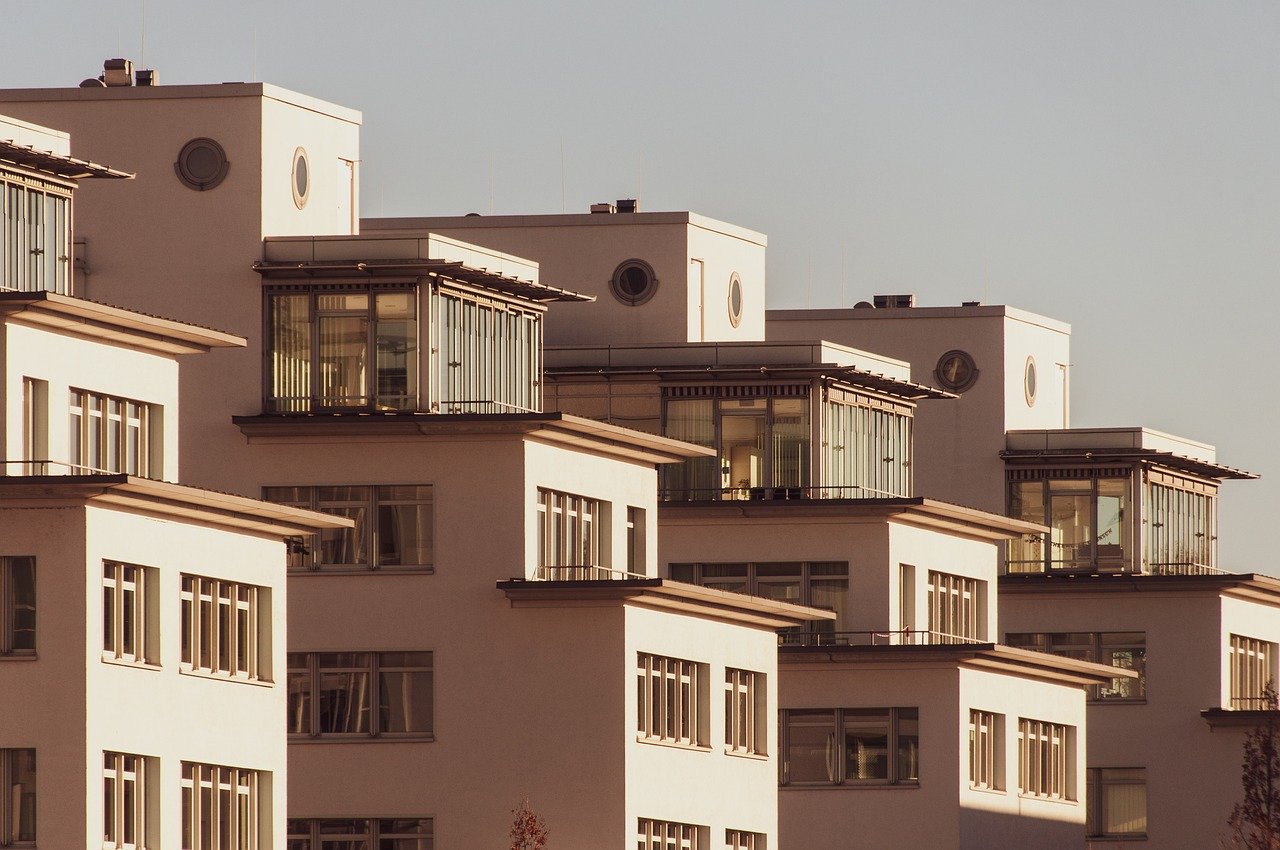
Insurance Coverage Considerations
When it comes to protecting your home against the unpredictable nature of disasters, adequate insurance coverage is not just a nice-to-have; it's a necessity. Imagine your home as your fortress, and insurance is the shield that guards it against the unforeseen. Without the right coverage, you might find yourself vulnerable when disaster strikes. So, what should you keep in mind when reviewing your insurance policies?
First and foremost, understanding the types of coverage available is crucial. Standard homeowners' insurance often covers damage from events like fire and theft, but it may not include specific disasters such as floods or earthquakes. For instance, homeowners in flood-prone areas should consider purchasing a separate flood insurance policy, which can be a lifesaver in case of heavy rains or river overflow. Similarly, those living in earthquake-prone regions should look into earthquake insurance, which can help cover the costs of structural damage that standard policies might overlook.
| Type of Coverage | Description | Considerations |
|---|---|---|
| Standard Homeowners Insurance | Covers general risks such as fire, theft, and vandalism. | Check if it includes natural disasters. |
| Flood Insurance | Specifically covers damage from flooding. | Often required in flood zones; separate policy needed. |
| Earthquake Insurance | Covers damage from seismic activity. | Not included in standard policies; consider based on location. |
Next, let’s talk about reviewing your policy limits. Just like you wouldn't wear shoes that are too small, you shouldn't have insurance that doesn't adequately cover your home’s value. It's vital to regularly assess your policy limits to ensure they align with current home values and the potential risks in your area. For example, if you've made significant renovations or improvements to your home, you might need to increase your coverage to reflect these changes. A good rule of thumb is to review your policy annually, especially after major life changes or home upgrades.
Moreover, understanding your deductible is equally important. The deductible is the amount you must pay out of pocket before your insurance kicks in. A higher deductible might lower your premium, but it also means more out-of-pocket expenses when you need to file a claim. It's essential to find a balance that works for your financial situation. Ask yourself, “How much can I afford to pay if disaster strikes?” That’s a question worth pondering.
Lastly, don't hesitate to consult with your insurance agent. They can provide insights tailored to your specific needs and help you navigate the complexities of your coverage. Remember, being proactive about your insurance can save you from a world of hurt when disaster hits.
- What types of natural disasters are typically covered by homeowners insurance? Most policies cover fire, theft, and vandalism, but you may need additional coverage for floods or earthquakes.
- How often should I review my insurance policy? It's advisable to review your policy at least once a year or after significant life changes like renovations or moving.
- What is a deductible, and how does it affect my insurance? A deductible is the amount you pay before your insurance coverage kicks in. Higher deductibles generally mean lower premiums, but it also means more out-of-pocket costs when you file a claim.
- Can I add additional coverage for specific risks? Yes, you can often add riders or endorsements to your policy for specific risks, such as valuable personal property or natural disasters not included in standard coverage.

Types of Coverage
When it comes to protecting your home from the unpredictable fury of natural disasters, understanding the types of insurance coverage available is crucial. Not all policies are created equal, and the right coverage can mean the difference between a minor setback and a devastating financial blow. Let's dive into the various types of coverage you should consider to fortify your home against the elements.
First and foremost, it's essential to recognize that standard homeowner's insurance typically covers damage from events like fire, theft, and vandalism. However, many natural disasters require additional coverage options. For instance, flood insurance is not included in most standard policies. If you live in a flood-prone area, securing a separate flood insurance policy through the National Flood Insurance Program (NFIP) is vital. This insurance can help cover the costs of repairs and rebuilding your home after a flood, which can be incredibly expensive.
Similarly, earthquake insurance is another critical type of coverage that homeowners in seismically active regions should consider. Earthquakes can cause significant structural damage, and without this specialized coverage, you could be left to bear the brunt of repair costs. In many cases, earthquake insurance policies also cover personal property loss, which can be a lifesaver if your belongings are damaged or destroyed.
Furthermore, if you reside in an area prone to hurricanes or severe storms, you might want to look into windstorm insurance. This type of coverage can protect your home from wind damage that often accompanies these natural disasters. It's important to note that some homeowner policies may exclude wind damage, so it's wise to check your policy details and consider additional coverage if necessary.
To give you a clearer picture, here's a brief overview of the different types of coverage you might need:
| Type of Coverage | Description |
|---|---|
| Flood Insurance | Covers damage from flooding, typically not included in standard policies. |
| Earthquake Insurance | Protects against damage caused by earthquakes, often not covered in standard homeowner policies. |
| Windstorm Insurance | Coverage for wind damage from hurricanes and severe storms, may require a separate policy. |
| Comprehensive Homeowners Insurance | Includes various protections against common perils, but may exclude specific natural disasters. |
As you assess your insurance needs, consider factors such as your geographical location, the age and condition of your home, and your financial situation. It may also be beneficial to consult with an insurance agent who can provide personalized advice based on your circumstances. Remember, it's better to be proactive than reactive when it comes to safeguarding your home against the forces of nature.
- What is the difference between flood insurance and homeowners insurance? Flood insurance specifically covers damage caused by flooding, while homeowners insurance typically covers a broader range of risks, excluding floods.
- Do I need earthquake insurance if I live in a low-risk area? While it's not mandatory, it’s worth considering if you want to protect your investment fully. Earthquakes can happen anywhere.
- How can I determine the right amount of coverage? Assess the value of your home and belongings, and consult with your insurance agent to ensure adequate coverage.
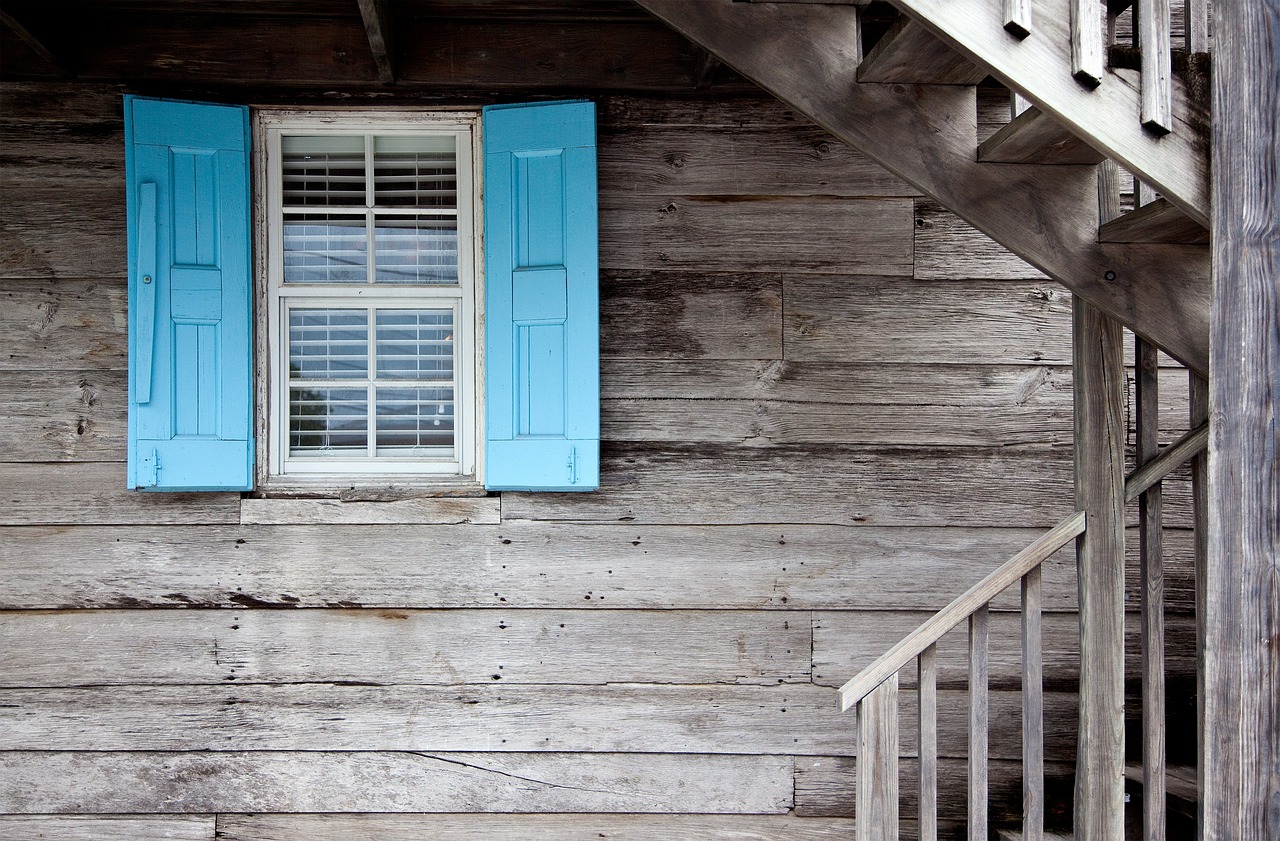
Reviewing Policy Limits
When it comes to safeguarding your home against the unpredictable forces of nature, one of the most crucial steps you can take is reviewing your insurance policy limits. Many homeowners make the mistake of setting their policy and forgetting about it, but just like a car that needs regular maintenance, your insurance needs a check-up too. Over time, the value of your home can change due to renovations, market fluctuations, or even changes in the neighborhood. If you don’t keep your policy updated, you might find yourself underinsured when disaster strikes.
Imagine this: a severe storm hits your area, causing extensive damage to your property. You file a claim, only to discover that your policy limits are insufficient to cover the repairs. This is a nightmare scenario that can be easily avoided with a little diligence. Regularly reviewing your policy limits ensures that you are adequately covered for potential damages caused by natural disasters, such as floods, earthquakes, or wildfires.
Here are some key factors to consider when reviewing your policy limits:
- Current Home Value: Assess the current market value of your home. Have you made significant improvements or renovations? If so, your policy limits should reflect these changes.
- Replacement Cost: Understand the difference between market value and replacement cost. Your insurance should cover the cost to rebuild your home, not just its current market value.
- Local Risks: Stay informed about the natural disaster risks specific to your area. If you live in a flood zone, for instance, you might need additional coverage beyond standard homeowners insurance.
- Policy Changes: Insurance policies can change over time. Make sure you are aware of any changes in coverage terms, exclusions, or limits that may affect your protection.
To help you visualize the importance of reviewing your policy, consider creating a simple table to track your home’s value and insurance coverage over time:
| Year | Market Value | Replacement Cost | Current Policy Limit |
|---|---|---|---|
| 2021 | $300,000 | $350,000 | $300,000 |
| 2022 | $320,000 | $370,000 | $300,000 |
| 2023 | $350,000 | $400,000 | $300,000 |
As you can see from the table, the market value and replacement cost of the home are increasing, but the current policy limit has remained static. This discrepancy highlights the need for homeowners to regularly assess their insurance coverage to ensure it aligns with their property’s current value and potential risks.
In conclusion, reviewing policy limits is not just a good practice; it’s a vital component of homeownership that can save you from financial distress in the event of a natural disaster. Don’t wait until it’s too late—take the time to evaluate your coverage today and make any necessary adjustments. Remember, being proactive now can mean the difference between recovery and financial hardship later.
- How often should I review my insurance policy limits? It’s advisable to review your policy at least once a year or after any significant changes to your home or local market conditions.
- What should I do if I find my coverage is inadequate? Contact your insurance provider to discuss your current policy and explore options for increasing your coverage.
- Are there any additional coverages I should consider? Depending on your location, you might want to consider flood insurance, earthquake insurance, or additional coverage for personal belongings.
Frequently Asked Questions
- What are the most common types of natural disasters?
Natural disasters can vary widely depending on your location, but some of the most common types include floods, hurricanes, earthquakes, and wildfires. Each of these events poses unique risks and requires different preparation strategies to mitigate their impact on your home.
- How can I assess my home's vulnerabilities?
To assess your home's vulnerabilities, start by conducting a thorough inspection of your property. Look for potential weaknesses in your home's structure, such as unsecured heavy furniture, inadequate drainage systems, or poor roofing. You can also consult local experts or resources that provide information on your area's specific risks.
- What should I include in my emergency plan?
Your emergency plan should cover several key elements: evacuation routes, communication strategies, and emergency contact information. Make sure every family member knows the plan and practices it regularly, so everyone is prepared to act quickly during a crisis.
- Is flood insurance necessary if I live in a low-risk area?
Even if you live in a low-risk area, flood insurance can be a wise investment. Flooding can occur unexpectedly, and standard homeowner's insurance typically doesn't cover flood damage. It's always better to be safe than sorry, so consider your options based on your specific location.
- How often should I review my insurance policy?
It's recommended to review your insurance policy at least once a year or whenever significant changes occur, such as renovations or changes in property value. This ensures that your coverage is up-to-date and adequately protects you against potential natural disasters.
- What steps can I take to prepare for an earthquake?
To prepare for an earthquake, start by securing heavy furniture and appliances to walls, and consider retrofitting your home to make it more earthquake-resistant. Additionally, create an emergency kit with essential supplies and establish a family communication plan in case of an emergency.
- How can I protect my home from hurricanes?
To protect your home from hurricanes, invest in storm shutters, reinforce your roof, and ensure proper drainage systems are in place. It's also crucial to have an evacuation plan ready and to stay informed about local weather alerts during hurricane season.
- What are the best ways to stay informed during a natural disaster?
Staying informed during a natural disaster involves having multiple sources of information. Use weather apps, local news stations, and emergency alert systems to receive timely updates. Having a battery-powered radio can also be invaluable if power outages occur.



















